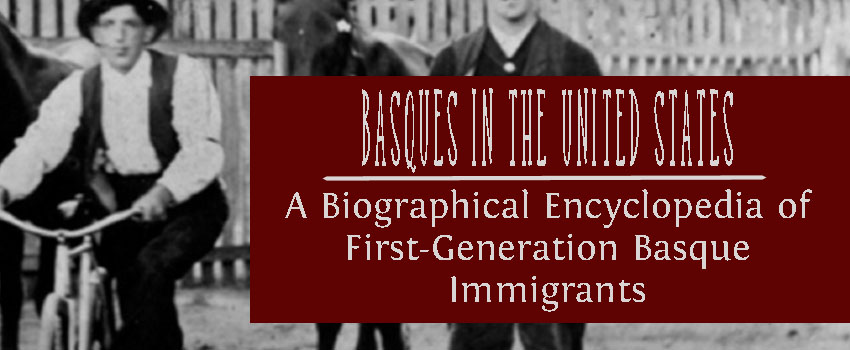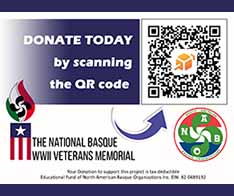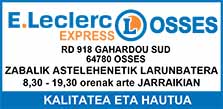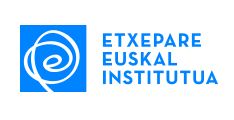
Koldo San Sebastián is in charge of the project in which many historians have collaborated, like Argitxu Camus-Etxekopar, Joxe Mallea-Olaetxe, Jone Laka, and José Luis Madarieta, to name a few. (Image: CBS)
Finishing up the second edition of Basques in the US, author Koldo San Sebastián and CBS publications coordinator Daniel Montero talked to EuskalKultura.com about the use of the Internet to attract new readers to history texts and books. “The Internet is a very powerful tool for divulgation. And it works in both directions, we put information out there but we also receive new data and corrections from the readers,” said San Sebastián. To what Montero added: “We want to encourage people to take part [in this project], and they're doing it little by little. I am a bit surprised by the impact of our first post, but that's a good sign.”
Reno, NV, USA. Domingo Txomin Malasechevarria had a rough life and a horrendous death: he was sentenced to capital punishment and put to death at the State Prison near Carson City, NV, on November 13, 1952. He was born in Bizkaia, in 1892, and moved to the United States in 1912. The lonely life of the sheepherder destabilized him, and that was the beginning of his end. The Center for Basque Studies of Reno, Nevada published a post about his life, taken from the book Basques in the US, on March 10, and in a few days, it was shared by a good amount of Facebook and other social network users. “I am a bit surprised by the impact that our first post had, but that's a good sign,” said Montero.
After Malasechevarria's story, the CBS posted a couple more articles about the Basques in West –way more cheerful, it must be said– that also were very-well received by readers. Now, that the CBS is working again with San Sebastián and his collaborators to publish, tentatively soon, the second edition of the book –this one will cover the whole US territory and will include references of over 30,000 Basques–, the author and the editor discussed with this bulletin the importance of the Internet for this kind of work.
“From the beginning we thought of Basques in the US as a more interactive project than a regular book,” stated Montero. “We wanted to present stories of regular folks, not just the famous ones, and we wanted to tell them from a different perspective. That's why we also created a specific site for the book. The whole work has an online side.” Koldo San Sebastián believes that “the Internet is a very powerful tool for divulgation. And it works in both directions, we put information out there but we also receive new data and corrections from the readers.”
In that sense, the editor also highlighted that they want to “encourage people to take part [in the project], and they're doing it little by little. We've received some good stories that were not included in the book and, also, additional information for some biographies.” Besides from the CBS blog, San Sebastián also gets important input from a couple of Facebook groups he manages.






 Send to a friend
Send to a friend Add comment
Add comment








